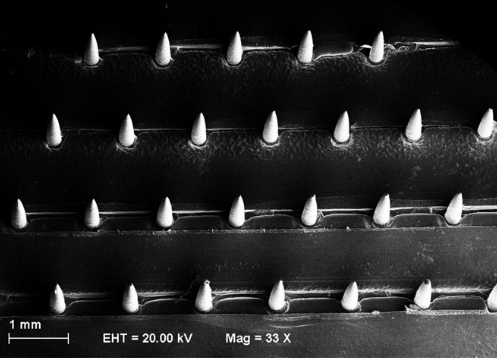We have developed a microneedle array biosensor that can detect skin burns. To make the biosensor, we devised a nanocomposite material from carbon nanotubes and a biocompatible polymer, poly(lactic acid). We then shaped the microneedle array from the nanocomposite material. The microneedles that formed were about 870 μm long, 250 μm wide, and electroactive. This meant that the microneedle array could be inserted into the skin to detect certain analytes by electrochemistry. We verified this by using the microneedle array to detect vitamin C in solution. Interestingly, when we tested the microneedle array biosensor on skin burns and normal (non-burnt) skin, the skin specimens showed different electrochemical responses. This gives us the technological basis for a minimally invasive biosensing approach to detecting skin burns.
For more information, please see:
Skaria E, et al. (2019) Poly(lactic) acid/carbon nanotube composite microneedle arrays for dermal biosensing. Analytical Chemistry (epub ahead of print). doi: 10.1021/acs.analchem.8b04980


